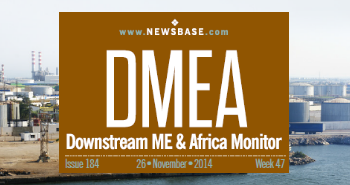TEHRAN BLOG: Petrol queues choke Iranian cities

Long lines of motorists leading to petrol stations have become a ubiquitous scene in Tehran and several other cities across the oil-producing country in recent weeks.
Waiting in slow-moving queues for up to an hour has become common, even late at night or early in the morning. To make matters worse, the station often runs out of fuel, forcing drivers to travel to another petrol station, which may be on the other side of the city. This is particularly frustrating due to the extreme heat Iranians are experiencing this summer.
Several reasons have been cited for this situation apart from the fact that the summer season often sees a marked rise in travelling by car. One major cause with precedents in recent memory is said to be the rumours about an imminent rise in petrol prices, which have long enjoyed heavy subsidies in Iran.
The cheap prices have arguably given rise to high consumption. Authorities have tried raising the rates before, only to face dire consequences. In November 2019, rises of up to 200% in fuel prices sparked deadly protests that later came to be known as “Bloody November”. Earlier, in June 2007, angry Iranians torched pump stations after the government said it was imposing fuel rationing amid a shortage of petrol due to over-consumption.
Petrol is currently priced in Iran at IRR150,000 (about 3 US cents) per litre for a certain quota per month and IRR300,000 (6 cents) beyond that quota, far below the cost of production even with the historically low rate of the rial against the dollar.
Revolutionary pillar
The 1979 Iranian revolution which swept away the country’s last monarch Mohammad Reza Pahlavi was built upon the idea of redistribution of the country’s natural resources to the masses at affordable prices. This raison d'être has, however, become a curse more than a blessing after the value of the Iranian currency and living standards crashed following decades of US-led sanctions on the country’s economy.
This low-cost energy pillar of the Islamic Republic has been a challenge for successive administrations of so-called centrist “Reformists” such as Hassan Rouhani as well as more hardline “Principalists” such as the current Raisi administration.
Rumours of another price increase prompted government officials to repeatedly announce that no such measures are on the agenda, at least by the end of the Persian year (March 2024).
Car owners and commuters differ
bne IntelliNews spoke with car owners and commuters in Tehran on the issue.
“We are talking about a ridiculously massive amount of precious time wasted here. Add to it all the time lost in Tehran’s phenomenal road traffic and see how many hours are frittered away,” said Ali, a cab driver waiting in the queue in his Peugeot 405.
“Imagine each car burning 1 litre of petrol until it gets through the line to reach the pump. How much fuel is lost in only waiting to get the cars refilled?” said Roxana, behind the wheel of her 2014 Hyundai.
Petroleum ministry keeps calm
“There is no talk of increasing petrol prices; we ask people to ignore the rumours,” Petroleum Minister Javad Owji said on August 14. “There is no problem facing in supplying benzine, and people should not be worried,” he added.
Another reason for the long queues is the recent restrictions imposed on fuelling, whereby motorists are only permitted to fill up to specific volumes. They also have to wait for 3-8 hours until they can refuel.
According to the minister, each Iranian is entitled to 60 litres of petrol at the price of IRR150,000, in addition to 150 litres priced at IRR30,000 per month. Every vehicle is also entitled to a maximum of 210 litres per month.
Another issue surrounds archaic fuel cards motorists must use to fill their vehicles. Many car owners, especially those who have new cars, lack these smart cards and have to use the few shared cards in the possession of the station attendants.
The government says, the refuelling restrictions are aimed at reining in the smuggling of petrol out of the country to neighbours such as Afghanistan and Iraq where prices are considerably higher.
Petrol consumption hits record high
The average daily petrol consumption in Iran has increased by 20% from 104mn litres in the last Persian calendar year (March 2022-23) to 124mn litres, according to Ali Ziyar, deputy director of the National Iranian Oil Refining and Distribution Company, on August 6.
Blaming the high consumption on outdated technology in the domestic auto industry, the official said Iran, with a population of 85mn people, uses as much fuel as a country with 250mn people, ILNA reported.
Noting that the 20% rise in consumption is a new record, he said Iran's annual petrol consumption growth rate has not surpassed 7% in recent years.
According to Ziyar, Iran produced 107mn litres of petrol in the fourth month of the current Persian calendar year (June 22-July 22), and 120mn litres were consumed during the same period.



Follow us online